
Food access
in a changing climate:
Stories from six remote and Indigenous communities in BC
Food is important for all people.
It is connected to our health, environment, culture and the Land.
This project aims to share experiences of food costs, food access and climate change from people living in remote areas of BC.
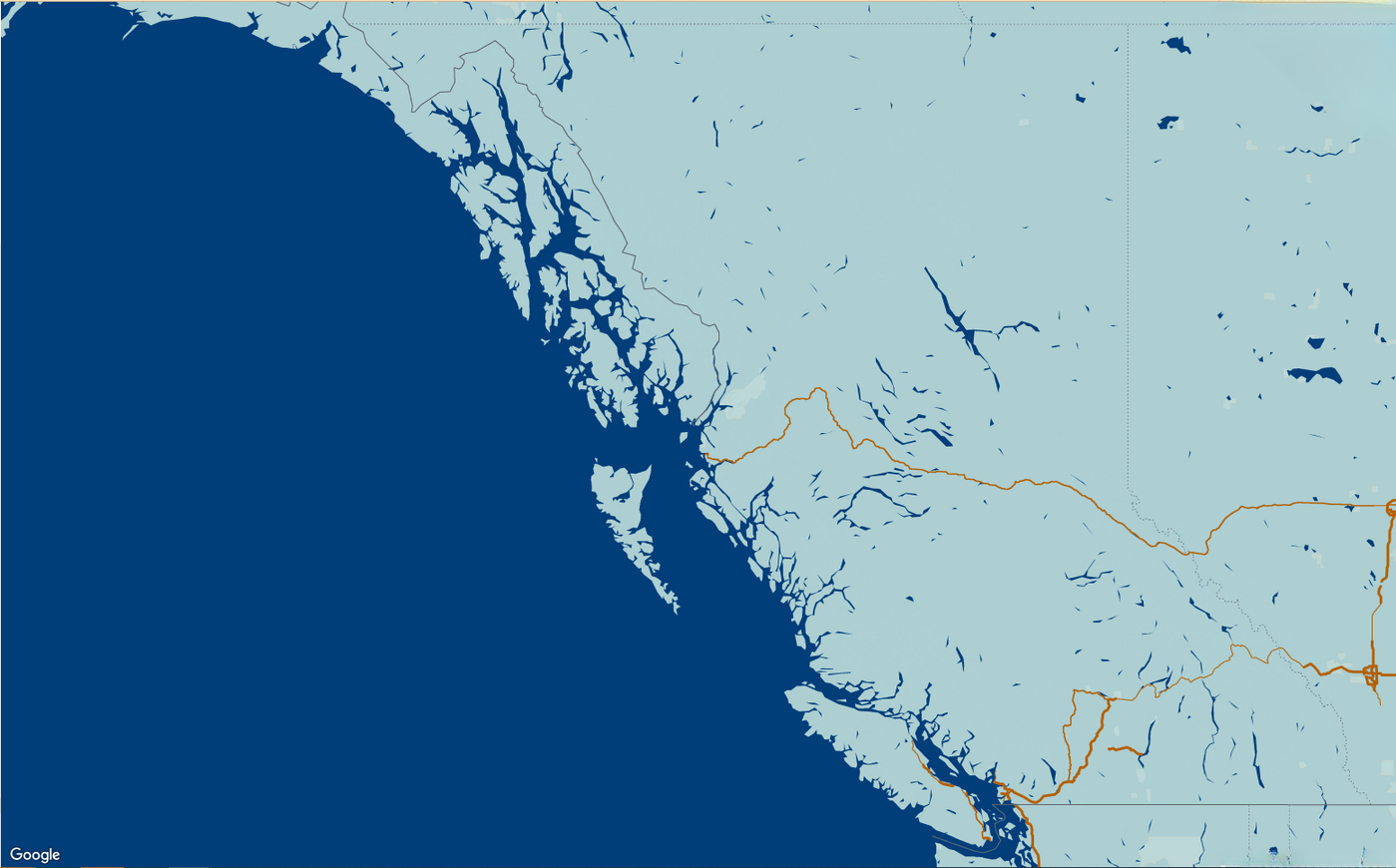
British Columbia
Prince George
Haida Gwaii
Vancouver Island
Vancouver
Map of communities
Those living in rural and remote communities have unique experiences related to food accessibility, affordability and availability of nutritious foods.
Six Indigenous and non-Indigenous communities across BC shared their stories.
Click on each location to visit the community.
Acknowledgements
We acknowledge the ancestral, unceded territories of First Nations across BC.
We express our immense gratitude to the participating communities, including:
- Ukwanalis Village - Dzawada'enuxw First Nation
- Tahsis
- Tipella, Port Douglas, Skookumchuck, Q’alatku’7em, and Sachteen (Southern Stl'atl'imx)
- Boston Bar
- Xeni Gwet’in First Nation
- Tsay Keh Dene Nation
- Atlin
- Hudson’s Hope/River of the Peace Métis Society, a Métis Chartered Community
Project contributors:
Illustrator: Moe Butterfly (Instagram)
BCCDC Food Security Team:
- Raihan Hassen, MSc, RD, Food Security Coordinator
- Janelle Hatch, MHSc, RD, Food Security Lead
- Seri Niimi-Burch, MSc, Food Security Coordinator
BCCDC Knowledge Translation:
- Himani Bhatnagar, MSc, Knowledge Translation Specialist
- Lynsey Hamilton, MSc, Knowledge Translation Specialist
Consultants:
- Rebecca Sovdi, RD, MPH
- Julia Tippett
- Michael Wesley, RD
We also wish to thank the members of the Project Advisory Committee for their contribution and guidance.
- Jared Qwustenuxun Williams, Knowledge Keeper, Quw’ut’sun, Vancouver Island Region
- Alec Willie, Knowledge Keeper, Nuxalk, Vancouver Coastal Region
- Joy Hall, Knowledge Keeper, Sto:lo, Fraser Salish Region
- Judith Wesley, Knowledge Keeper, Gitxsan, Northern Region
- Janna Wale, Knowledge Keeper, Gitxsan, Northern Region
- Elizabeth Howard, Vancouver Coastal Health
- Jessie Newman, Island Health
- Leona Shaw, Métis Nation BC
- Amelia Gallant, Northern Health
- Anne Todd, Fraser Health
- Kathleen Yung, First Nations Health Authority
- Seamus Damstrom, Interior Health
What is the project?
Every few years, the BC Centre for Disease Control’s (BCCDC) Food Costing Report assesses the affordability of healthy eating in BC.
However, it does not capture the experiences and food costs of people living in remote communities that do not have a full-service grocery store.
This project aims to provide insight into food costs, food access and the impacts of climate change in remote Indigenous and non-Indigenous communities. Communities were first engaged in 2022, and the stories were received in 2023.
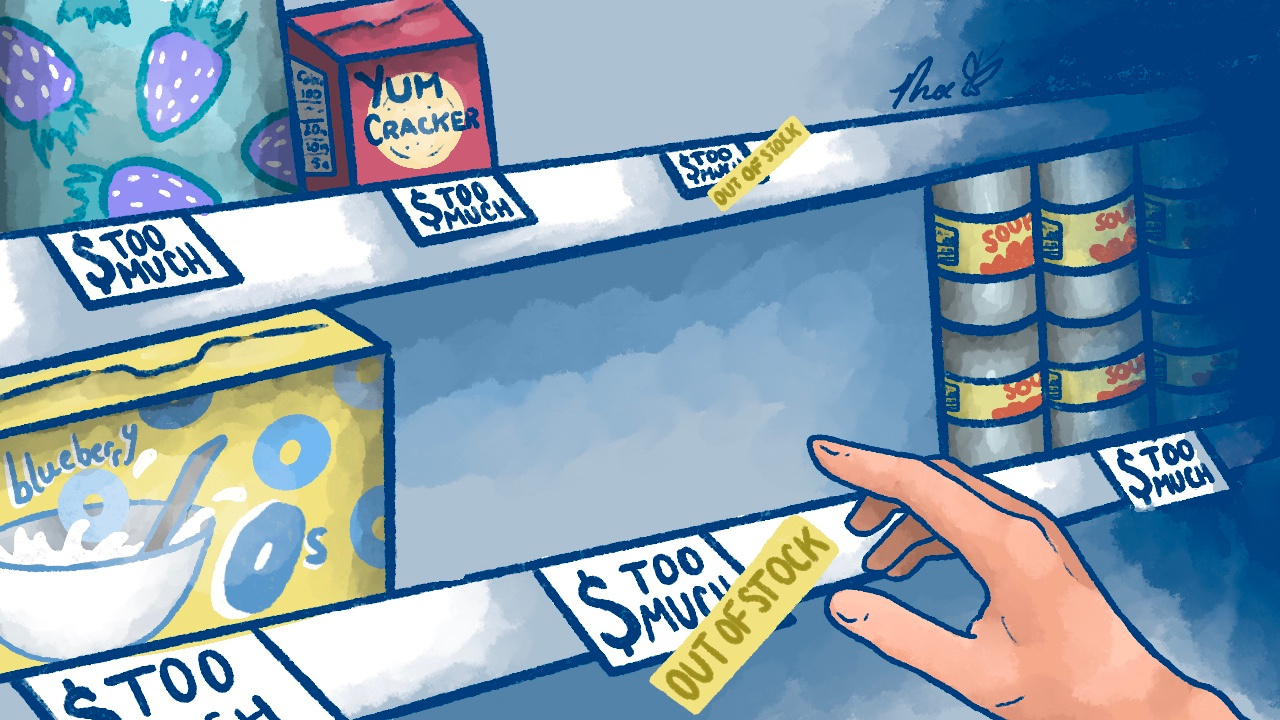
Life in remote communities
Living in a remote community comes with many benefits, such as strong community support systems and connection to nature.
People living in remote settings also face challenges, such as fewer work opportunities and less access to services.
For some Indigenous communities, locations are closely tied to their traditional territory, ancestors, culture and traditional food systems.
Other Indigenous communities have been forcibly removed from their traditional territories by colonial governments, disrupting their connection to Land and limiting their access to traditional foods.
Land rights and title, loss of culture, a changing climate, long distances and many other factors further complicate food security for remote communities across BC.
Climate change impacts local, regional and global food systems.
It contributes to rising food prices and makes access to local and Indigenous foods more difficult.
Industrialization and colonization in Canada have changed food systems over time, leading to shifts in food production, global import and export, eradication of species, destruction of lands, habitats and culture and a dependence on the market food system.
The stories
What we heard:
The communities engaged in this project shared their unique experiences of food access, availability and climate change. Each remote community has different experiences due to their geography, culture, history and other factors, however there were also shared perspectives and opportunities across the province.
People emphasized culture and connection. Food was seen as a connection point for many; people help one another, celebrate together and give their time to community food programs and services. People also spoke of spending a lot of time planning how to meet their own food needs and those of their family.
Much was shared about the connection to Land and local foods. People spoke of bringing back traditional food practices through hunting, fishing, gardening, gathering and preserving foods.
The changing climate is a great concern; extreme weather events, shifts in wildlife’s habitats and numbers, and impacts to food access and transportation. People shared worries about the frequency of such disruptions now and in the future with climate change.
Taken together, remote community living comes with benefits of culture and connection within community and to the Land. It also comes with challenges of getting affordable food that people need to thrive. Communities expressed a desire to improve food access and affordability and to work with government and other sectors to ensure food security.
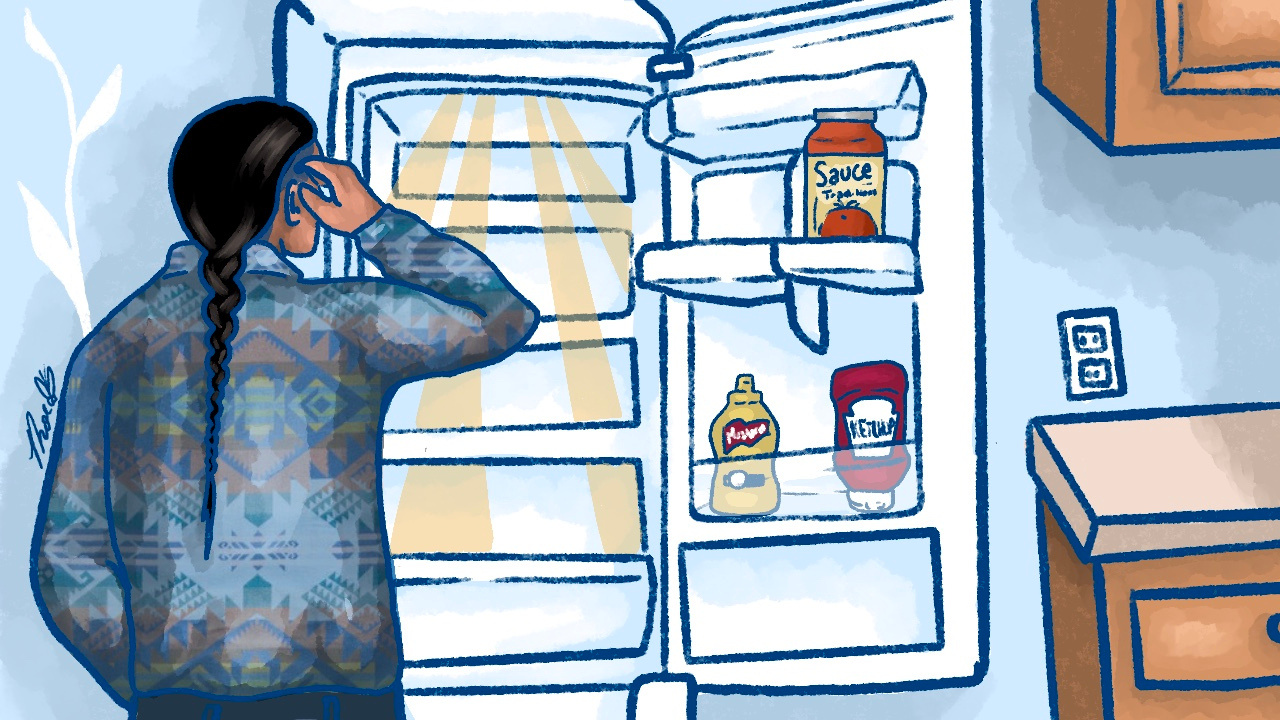
Southern Stl’atl’imx
(pronounced stat-lee-um)
Love what you give and it goes through the people
Add a Call-to-Action
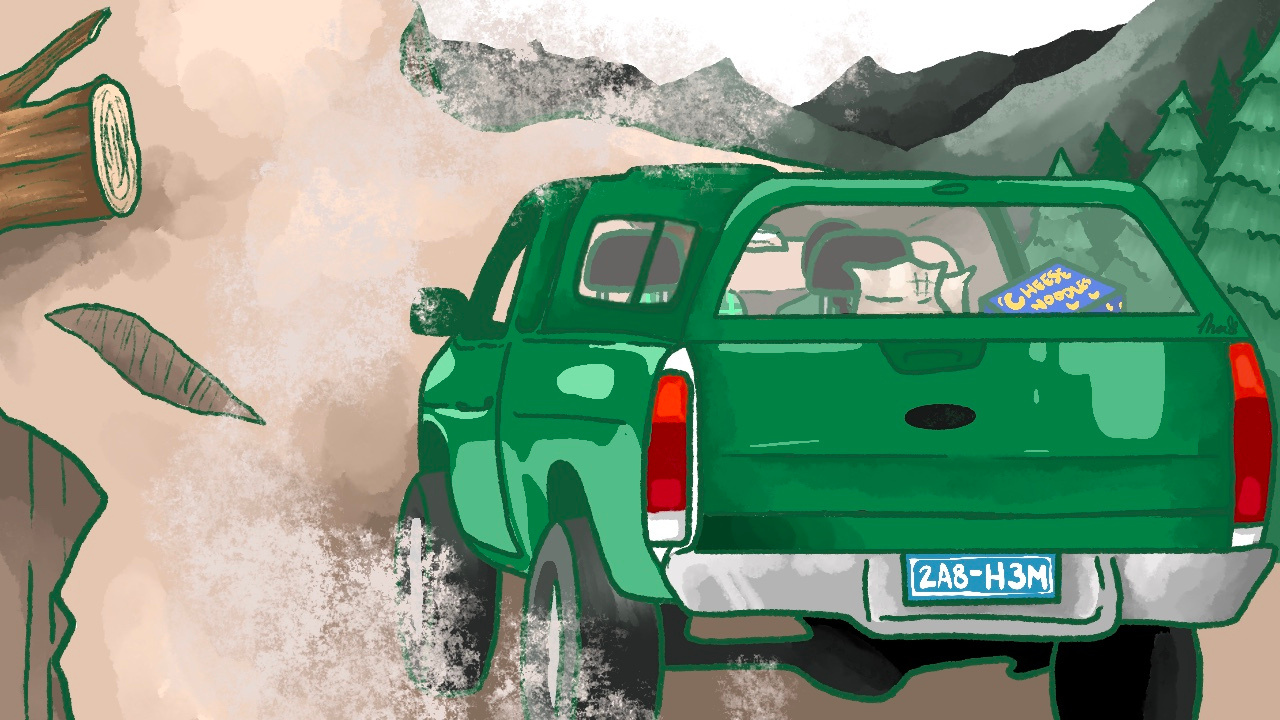
“The animals and plants take care of us so that we can take care of each other.”
“Driving back, groceries are everywhere, on our laps, on the seats. We try to get as many people to go or to get stuff for as many people as possible.”
“There is too much rain in a short amount of time, and then the summers are too long, dry and hot for berries to grow.”
Key themes:
Road Conditions and Travel Residents shared that the community relies on the Forest Service Road (FSR) to access large-scale grocery stores such as in Pemberton which may take a full day, depending on the road conditions. |
Giving and Sharing Community members care for one another by giving and sharing of local and nutritious food among one another. Sharing is a way to respect the animals and plants that help sustain the community members. |
Hopes and visions for the future Future visions includes reliable and safe communal transportation, a cultural centre, and a larger community market where people can share and/or sell traditional and local foods. |
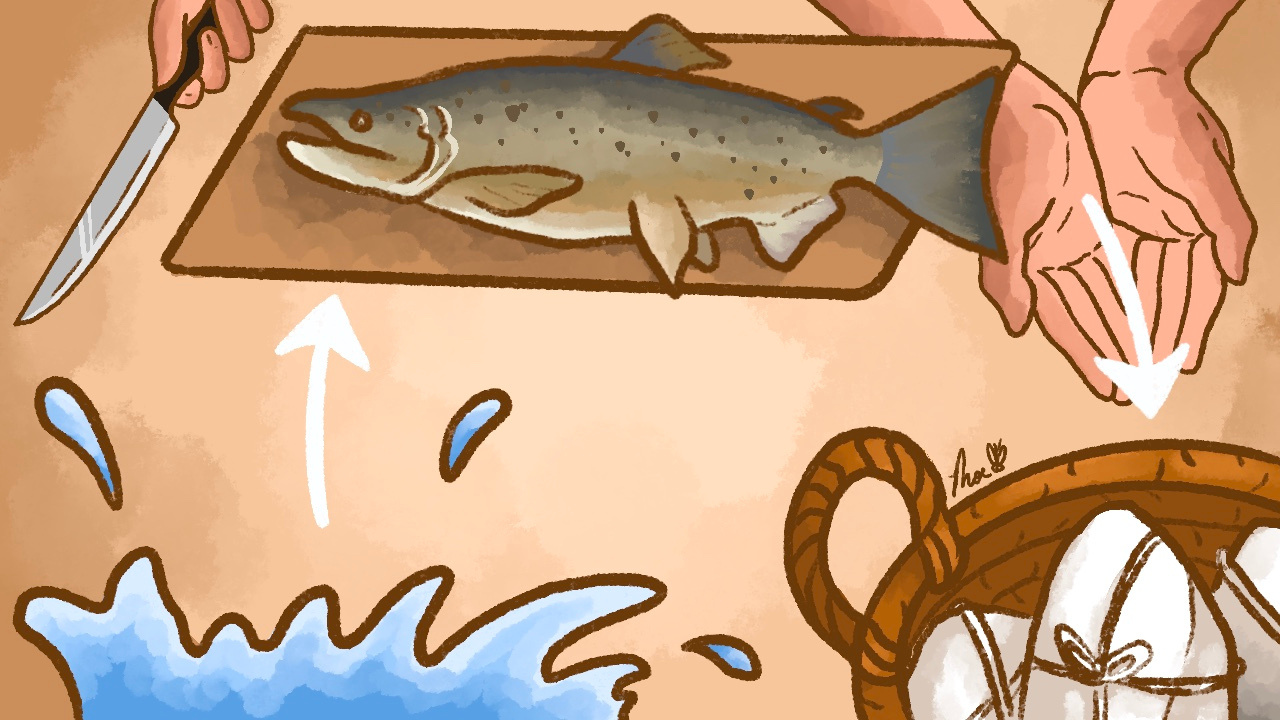
Tsay Keh Dene
(pronounced say-kay-denay)
Industrial disruption has changed everything
Add a Call-to-Action
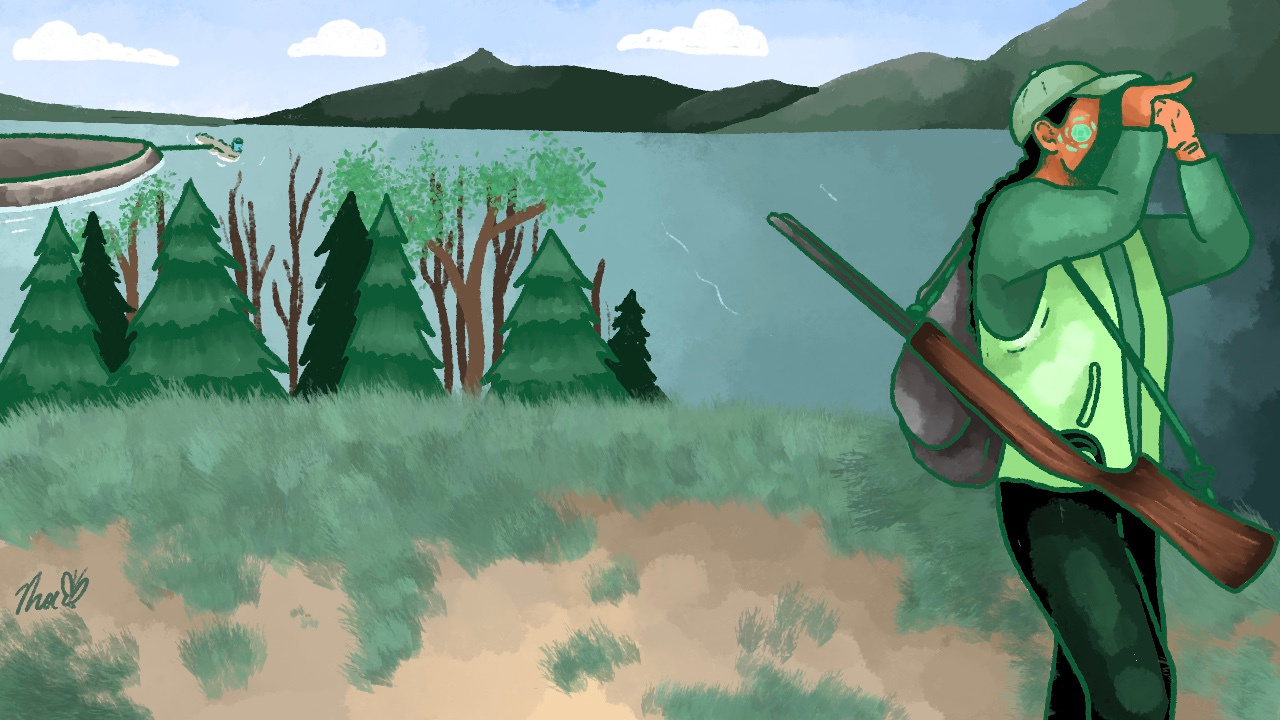
“Gone are the days where a hunter can walk for a few miles and get a moose due to industry…”
“[The reservoir] caused so much devastation to the Tsay Keh Dene people; not only did that displace them, but it also caused limited access to traditional harvesting areas on their territory and created longer distances to travel to the neighboring towns for supplies.”
“Most times due to logging activity on territory, in and around [moose] habitat causes the decline in some areas. The mess of debris on the land, or the road and trails are not safe to use, [this] limits access to their traditional harvest areas.”
Key themes:
Devastating impacts from industrial distribution Industrial disruptions, including the creation of the local dam and reservoir resulted in significant changes to the local landscape, affecting harvesting grounds and wildlife habitats. |
Extreme travel conditions Tsay Keh Dene is a remote community with limited access routes into the community, meaning that the store’s inventory is heavily reliant on the shared logging road. |
Hopes and visions for the future The community is guided by a set of fundamental values that include family, culture, and work ethic. A future vision is to develop programs for teaching about Indigenous (traditional) foods, |
Boston Bar
A Fraser Canyon community severely impacted by climate events
Add a Call-to-Action
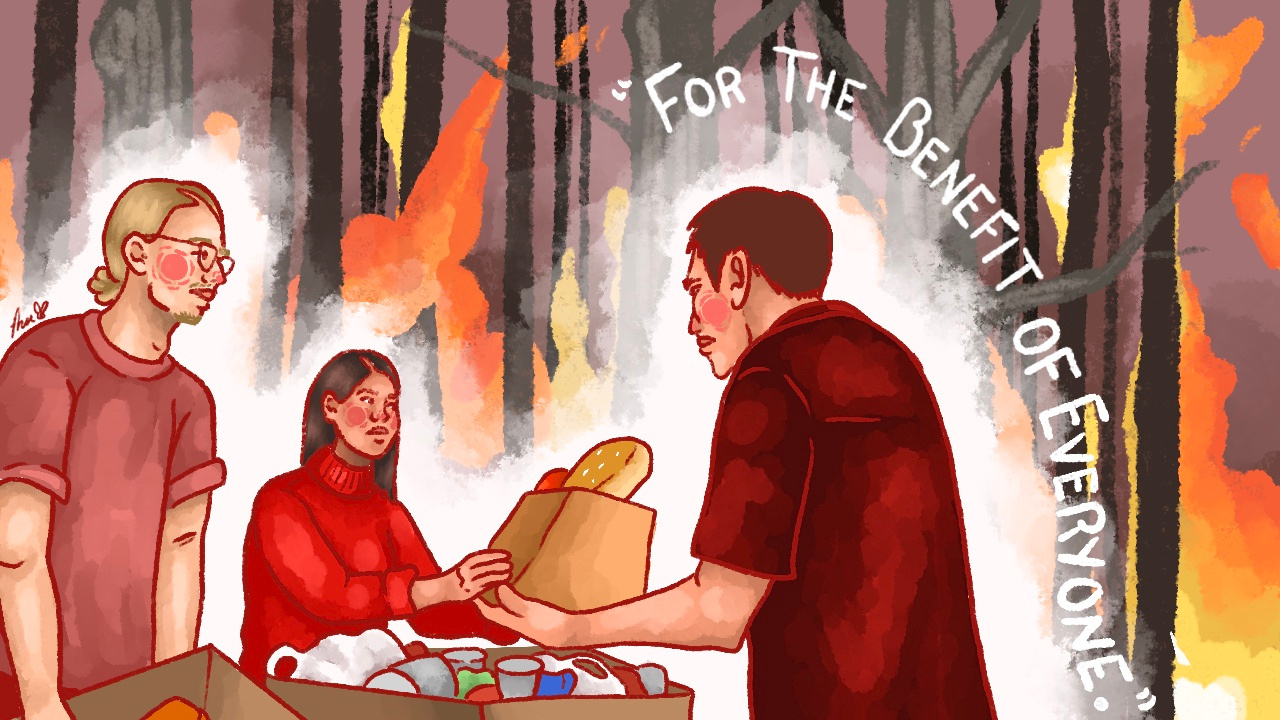
“Climate change is changing everything ... these things impact our foods, delivery, travel and traditional food access.”
“Our community has a few staple volunteers; one in particular that takes care of us. Without her our community would greatly suffer during these emergency or stressful times where we need help.”
“2021 was quite literally the year of hell. We had record breaking heat, fires that lasted months, unbelievable flooding, almost a full week of power outage that spoiled all of our fridges and freezers, and then record snowfall and avalanches. “
Key themes:
Severe climate change impacts Climate emergencies, like forest fires and floods put increased pressure on the local food system. |
Community culture and volunteerism Community members come together to support one another by sharing resources and cooking together. |
Hopes and visions for the future Visions for the future include financial support for low-income families, and support for developing the local food system infrastructure. |
Hudson’s Hope
The important connection between food and Métis culture
Add a Call-to-Action
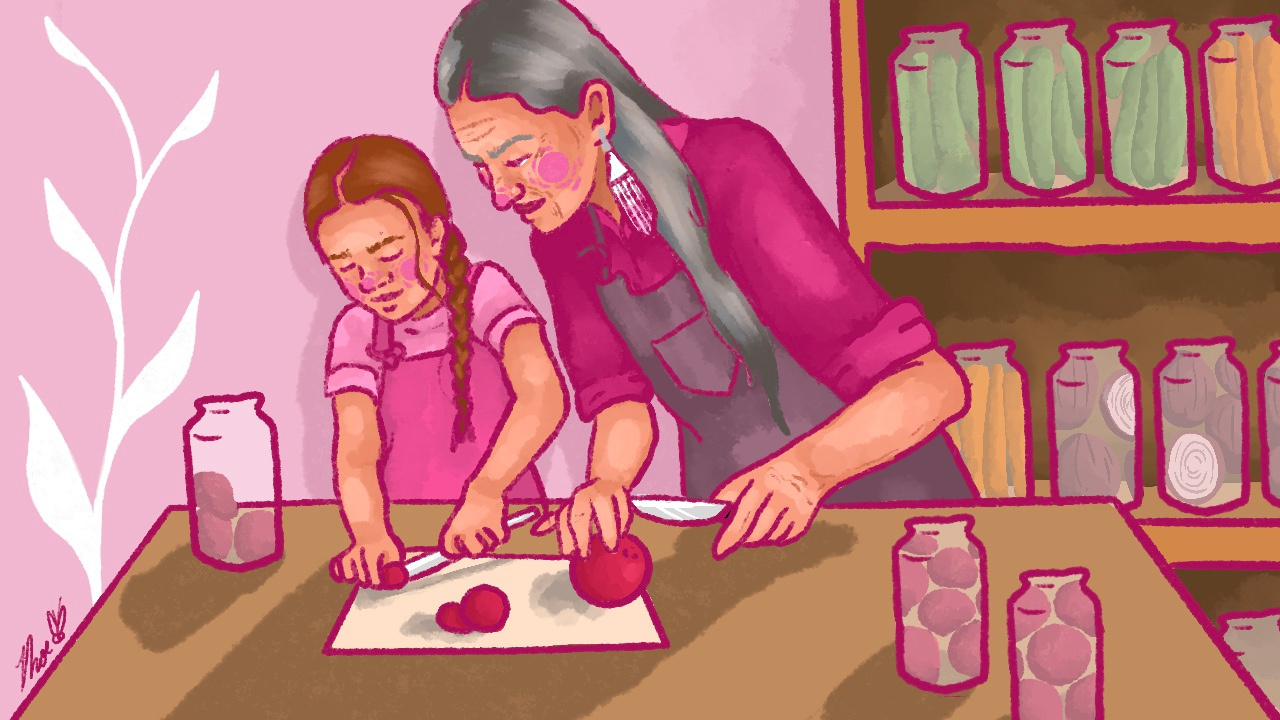
“Mom saved all the food that she could. She taught me how to preserve… it's definitely a skill everybody needs to learn.”
“Métis people are rooted in sharing their resources with each other during winter months, providing for one another. Food is a central pillar to Métis culture and identity”
“...last year, with the huge fire we had. We lost tons and tons of forests, so finding the animals that we rely on for food is quite a challenge.”
Key themes:
Growing and preserving Food preservation is a necessity that allows residents to stretch bulk food supplies and reduces reliance on grocery stores. |
Industry and climate change impacts on food Wildfires and other climate events threaten local food sources in the summertime and the wintertime. |
Hopes and visions for the future Sharing, gathering, and connecting over food is an integral part of the Métis culture in Hudson’s Hope. Visions for the future include building year-round greenhouses and securing a larger community bus to provide services for community members to access foods. |
Atlin
Transporting food in the far north
Add a Call-to-Action
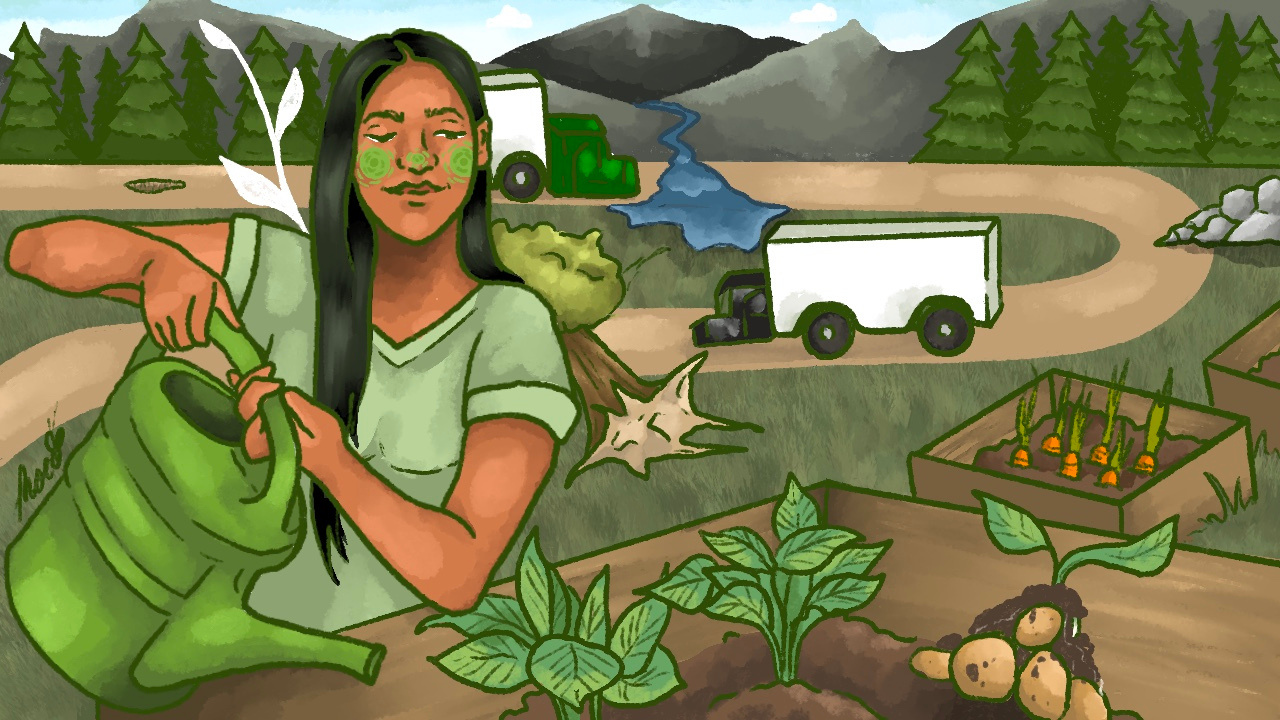
“Gardens, I think, are a big part
of the North, and people feel a little bit safer if they don't have to rely on going down to the grocery store. If they can just grow them themselves… it is an important part of living off the land.”
“A lot of people out here live off the land in one way or another, but it’s so individual, you don’t always know.”
“Locally, groceries are much more expensive than they are in Whitehorse. That relates directly to the cost of transportation, and freight is tremendously expensive.”
Key themes:
Changes in the food system over time Until recent decades, the community relied almost exclusively on traditional foods from the waters and lands. Today, there is greater consumption of market foods. |
Challenges in transportation Transportation is tricky as a fly or boat-in only community. Shipping time is 2 hours by boat, plus 1 hour up the Gwa’yi River to the community, plus further efforts to transport the goods from the beach to their final destination. |
Hopes and vision for the future Visions of the future include community growth and development like growing and selling local foods and educating youth about cultural practices. |
Tahsis
A story of community support and sharing
Add a Call-to-Action
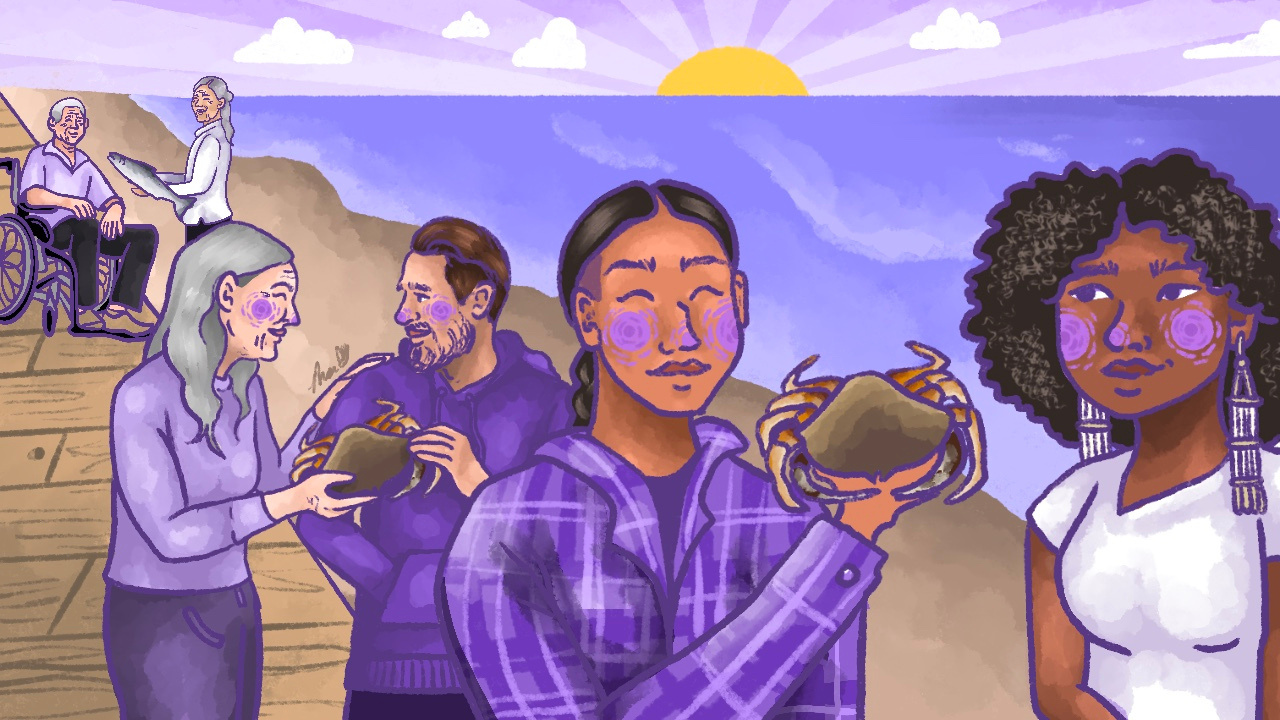
“People greeted each other with fish and crab. That is no longer available as a giveaway because we don’t have them anymore.”
“It's a nice place to live. We take care of each other in a lot of ways, because there are so many people volunteering and working together.”
“… the cost on several of the items at the grocery store is enormous and unaffordable, and I know a lot of times people [have] chosen to go without certain items… But that’s the way it is out here, unfortunately.”
Key themes:
Difficult access to groceries Larger stores in Campbell River with more variety and cheaper options can be a 6-8 hour roundtrip journey. Each monthly trip, including food and fuel, can cost $1000 or more. |
Spirit of giving Volunteers help older adults and those with disabilities or illnesses when they are not able to travel for groceries. The community cares for each other and call it a “favour economy”, but some hope to not rely on favours for food. |
Hopes for the future Visions for the future includes a food storage and distribution center to run food programs for the community. |
Read the full stories...
Works Cited
[1] Future, John Hopkins Center for a Liveable, "Food System Primer," [Online]. Available: https://www.foodsystemprimer.org. [Accessed April 2023].
[2] York University, "Food Policy for Canada," [Online]. Available: https://foodpolicyforcanada.info.yorku.ca/backgrounder/colonial-history/. [Accessed April 2023].
[3] ReTooling for Climate Change, "ReTooling," [Online]. Available: https://retooling.ca/taking-action/food-systems/. [Accessed April 2023].
[4] University of Victoria, “Scientists link 2021 BC floods to human-induced climate change,” [Online]. Available: https://www.uvic.ca/news/topics/2022+bc-floods-and-climate-change+news. [Accessed Feb 25, 2023].
For more information about the Food Costs and Climate Change Stories from Remote Communities in British Columbia Project, please email: foodsecurity@bccdc.ca